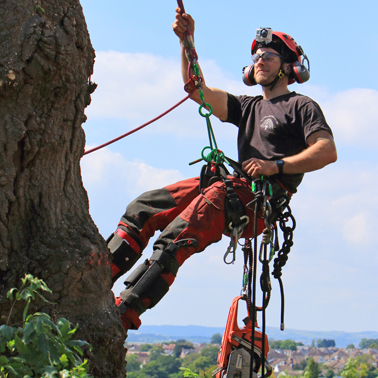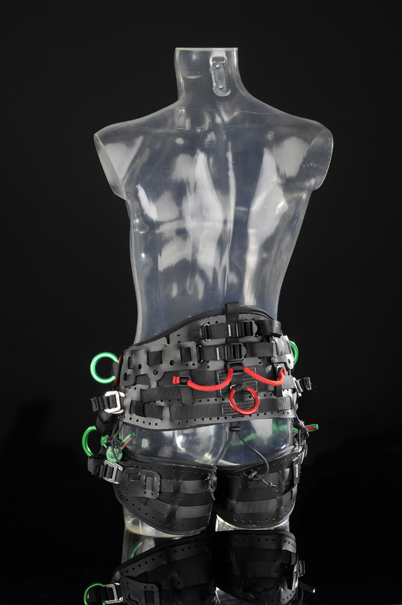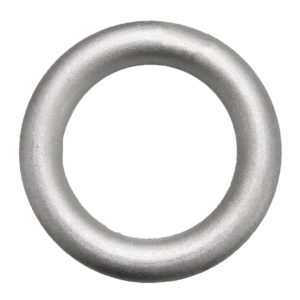
The Evolution of the Arborist Climbing Harness
The roots of modern arboriculture in Britain can be traced back to 1854 when the Arboricultural Society of Scotland was established. While an understanding of trees as living organisms is still central, the practical aspects have progressed exponentially over the subsequent decades. The industry has developed to reflect wider societal advancements in technology, safety standards and services, investing more in the comfort and safety of its workers more than ever. Now, equipment is not only being built to mitigate safety risks, but tailored to better facilitate the role of the user, allowing you to work harder and more efficiently.
Tree Climbing Harnesses are some of the most rapidly developing instruments in an arborist’s arsenal. Within the space of 20 years, there’s been a dramatic shift from gear that gets the job done, to specialist feature focused harnesses that excel on an ergonomic and functional level.
If you talk to an arborist who has been in the business for a couple of decades, you’ll find that their starter harnesses could have been anything from parachute harnesses without leg loops, to a simple waist harness with two lanyards.
20 years ago, the Willans was pretty much the only harness cut out for the job. Whilst this harness has stood the test of time and is still a firm favourite with some arborists today – the core functions of arborism having remained the same – it’s simplicity sets it distinctly apart from modern counterparts with their lightweight materials, customisable fit and the definite shift to leg loop style harnesses.
The variation on the market now affords arborists the ability to select a harness that best meets their personal ergonomics and, equally importantly, their working requirements – whether it’s the versatility of customisable leg loops, a harness specifically for SRT, or superior back support.
But what has been the driving forces behind these changes?
When we spoke to some of our clients, the biggest factor it seemed was that the arboriculture industry was turning inwards, to focus on itself.

The Pace of Change
Kevin, an Arborist of over twenty years, took us through how quickly the industry has developed over the last ten years particularly. Although he started off with sit harnesses, in a short space of time harnesses started to develop with leg loops and movable D Rings. In the last few years, in particular, the industry has “come on leaps and bounds,” with the majority of manufacturers now making adjustable harnesses.
Chris, who has been working as an Arborist for over a few decades, made an important distinction between the UK and US markets. Marking out how much further ahead the US markets are in terms of variety of product, and how much faster the industry over there has grown.
He particularly mentioned that Americans have a lot more selections of harnesses, but they’re not marked for UK sale.
He offers that with the increased communication that modern global commerce affords, the British Market will follow suit. And the pace of rapid growth will increase exponentially.
What Has Driven the Change?
Out of all the arborists we spoke to the drive for change appears to be driven by one thing. Arborists taking control over the development and manufacturing of their own gear.
Over the years, the vast amount of technology available in the manufacturing process has meant that there’s now more opportunity than ever to construct quality equipment.
The physical demands of the job, and the time spent in harnesses can have a detrimental effect on the body. So it is natural that external technological developments have facilitated a movement towards deeper investment in the science and people of the arboriculture industry.
Change is Lead by Arborists
Kevin stated that the market has changed, simply because more Arborists are now moving into product manufacturing.
The early market was dominated by companies manufacturing a very limited selection of climbing equipment, which arborists then largely had to modify to suit their own needs. With the advent of an increasing number of Arborists entering the industry, the capacity for creating specialised equipment has increased.
Now, these arborists, who have grown with the industry, and worked within it, are applying years of on-the-job insight to increased technological capacity to create high performing products that improve job performance and are less restrictive. What this means is that harnesses are now equally geared to the fit the body, as much as the job spec.
Tailored to the Body
Rather than restrictive fixed D’s, most modern harnesses include sliding D’s, and some also offer variously sized bridges, allowing for less strain on the body.
Manufacturers like Teufelberger have dramatically changed the landscape of the market by making harnesses that adjust for different body types and ergonomic support. Teufelberger’s seminal TreeMotion harness allows for a freedom of movement that is unparalleled in the market.

The Evolution of the Arborist Climbing Harness

The roots of modern arboriculture in Britain can be traced back to 1854 when the Arboricultural Society of Scotland was established. While an understanding of trees as living organisms is still central, the practical aspects have progressed exponentially over the subsequent decades. The industry has developed to reflect wider societal advancements in technology, safety standards and services, investing more in the comfort and safety of its workers more than ever. Now, equipment is not only being built to mitigate safety risks, but tailored to better facilitate the role of the user, allowing you to work harder and more efficiently.
Tree Climbing Harnesses are some of the most rapidly developing instruments in an arborist’s arsenal. Within the space of 20 years, there’s been a dramatic shift from gear that gets the job done, to specialist feature focused harnesses that excel on an ergonomic and functional level.
If you talk to an arborist who has been in the business for a couple of decades, you’ll find that their starter harnesses could have been anything from parachute harnesses without leg loops, to a simple waist harness with two lanyards.
20 years ago, the Willans was pretty much the only harness cut out for the job. Whilst this harness has stood the test of time and is still a firm favourite with some arborists today – the core functions of arborism having remained the same – it’s simplicity sets it distinctly apart from modern counterparts with their lightweight materials, customisable fit and the definite shift to leg loop style harnesses.
The variation on the market now affords arborists the ability to select a harness that best meets their personal ergonomics and, equally importantly, their working requirements – whether it’s the versatility of customisable leg loops, a harness specifically for SRT, or superior back support.
But what has been the driving forces behind these changes?
When we spoke to some of our clients, the biggest factor it seemed was that the arboriculture industry was turning inwards, to focus on itself.

The Pace of Change
Kevin, an Arborist of over twenty years, took us through how quickly the industry has developed over the last ten years particularly. Although he started off with sit harnesses, in a short space of time harnesses started to develop with leg loops and movable D Rings. In the last few years, in particular, the industry has “come on leaps and bounds,” with the majority of manufacturers now making adjustable harnesses.
Chris, who has been working as an Arborist for over a few decades, made an important distinction between the UK and US markets. Marking out how much further ahead the US markets are in terms of variety of product, and how much faster the industry over there has grown.
He particularly mentioned that Americans have a lot more selections of harnesses, but they’re not marked for UK sale.
He offers that with the increased communication that modern global commerce affords, the British Market will follow suit. And the pace of rapid growth will increase exponentially.
What Has Driven the Change?
Out of all the arborists we spoke to the drive for change appears to be driven by one thing. Arborists taking control over the development and manufacturing of their own gear.
Over the years, the vast amount of technology available in the manufacturing process has meant that there’s now more opportunity than ever to construct quality equipment.
The physical demands of the job, and the time spent in harnesses can have a detrimental effect on the body. So it is natural that external technological developments have facilitated a movement towards deeper investment in the science and people of the arboriculture industry.
Change is Lead by Arborists
Kevin stated that the market has changed, simply because more Arborists are now moving into product manufacturing.
The early market was dominated by companies manufacturing a very limited selection of climbing equipment, which arborists then largely had to modify to suit their own needs. With the advent of an increasing number of Arborists entering the industry, the capacity for creating specialised equipment has increased.
Now, these arborists, who have grown with the industry, and worked within it, are applying years of on-the-job insight to increased technological capacity to create high performing products that improve job performance and are less restrictive. What this means is that harnesses are now equally geared to the fit the body, as much as the job spec.
Tailored to the Body
Rather than restrictive fixed D’s, most modern harnesses include sliding D’s, and some also offer variously sized bridges, allowing for less strain on the body.
Manufacturers like Teufelberger have dramatically changed the landscape of the market by making harnesses that adjust for different body types and ergonomic support. Teufelberger’s seminal TreeMotion harness allows for a freedom of movement that is unparalleled in the market.

Drawing on the wealth of knowledge of eight-time world champion Bernd Strasser, the TreeMotion includes a forward suspension system that is constantly in motion and three easy-to-handle readjustment mechanisms that allow users to tune the front D-rings to their individual needs. The end result is that this harness can be tailored exactly to the individual climber, and works with their body movements, rather than acting against it as a fixed structure.
Of course, these steps towards making harnesses more suited the those that wear them will only lead to increased job performance and productivity.
See our guide on how to choose the right harness for you: https://www.landmarktrading.com/blog/guide-buying-new-arborist-climbing-harness/
Emphasis on Longevity
The increased concern around how harnesses affect the body has contributed to progression, too. Rather than focusing only on functionality, improvements have been made to mitigate the short and long-term risks to the body.
It’s no secret that tree climbing is a labour intensive role that can be particularly hard on the body. The renewed focus on the wellbeing of the wearer has lead to harnesses that put less strain on the body, by implementing improvements such as better back support and comfort padding.
This, coupled with an expanding market that has enabled arborists from across the globe to connect, collaborate and export products to international markets, has given us the most exciting age of equipment to date.
And we enthusiastically wait to see what the future brings.

